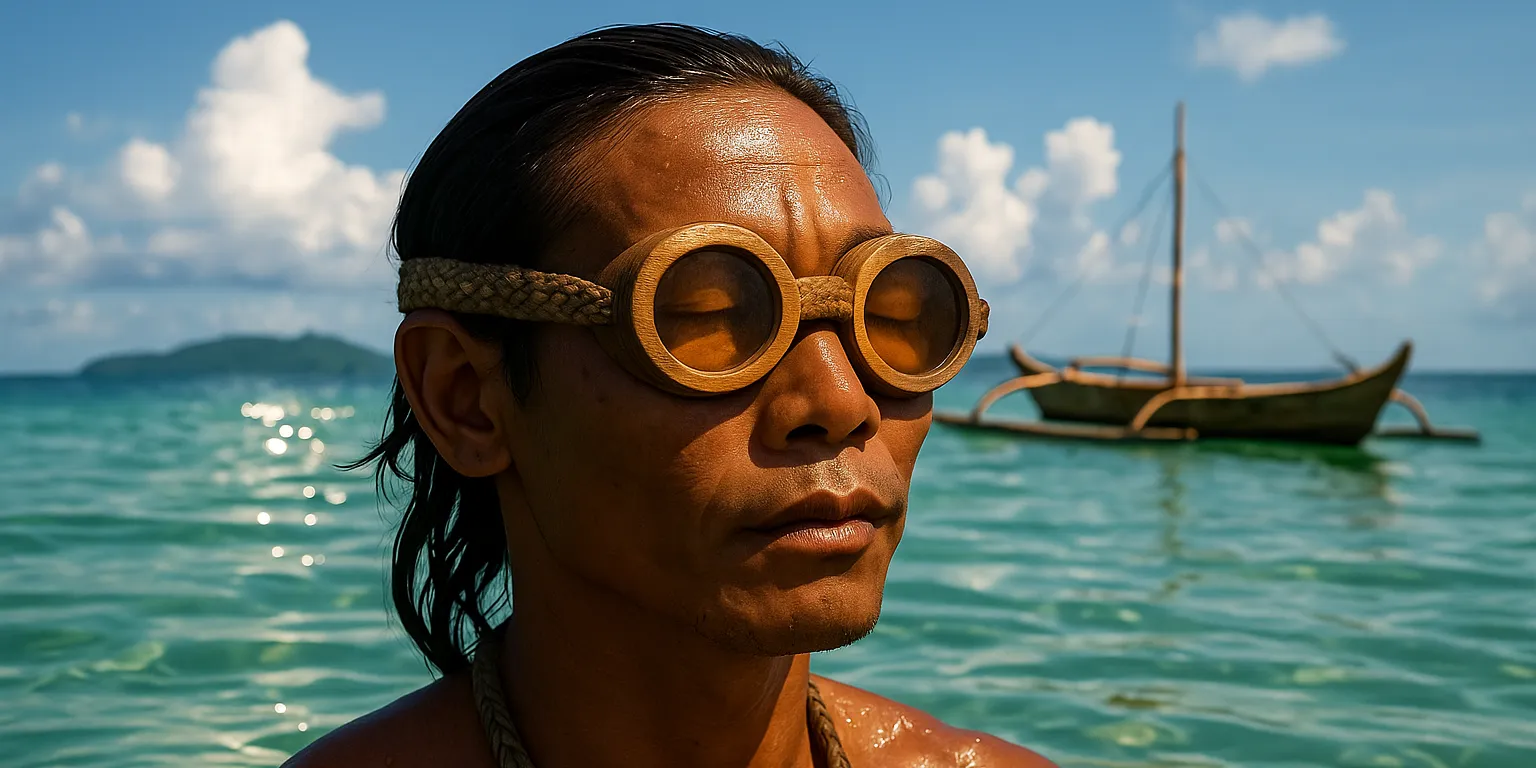Kaca Mata Laut
The Tau Dilaut of the Southwestern Region live on - and in - the sea more than any other human ethnicity. Over the course of a day, they may spend up to sixty percent of their time underwater, either spearfishing or gathering food such as clams, mussels, oysters, and kelp. Unlike the Selkies, their eyes are not adapted to this environment; prolonged exposure to seawater is uncomfortable and can even damage their vision. But they have a solution: Kaca Mata Laut, or Sea Goggles.
Construction
The body of the Kaca Mata Laut is carved from wood - most often mangrove, although driftwood is also used. It is shaped to fit the face of the intended wearer, and holes are then bored for the eyes. The lenses are made from sea turtle shell; once boiled, shaped, smoothed, and polished, thin layers of shell become nearly transparent, with only a faint green or amber tint. The lenses are sealed into place with resin or natural rubber - mangrove resin being the most common sealant.
Finally, the strap is fitted. It is typically made from woven coconut fiber, though some versions use leather or the unusually elastic fibers of netweed. The latter is especially prized, as it requires no knots - the netweed strap can be stretched around the head and will hold the goggles firmly in place.
Utility
When wearing the Kaca Mata Laut, a person's underwater vision is greatly improved. The goggles protect the eyes from saltwater and reduce the effects of surface glare (when above water) and underwater distortion. Some Tau Dilaut also wear them on bright, sunny days even out of the water, as the faint tint of the lenses softens the harshness of the sun. A few even possess goggles with deliberately thicker lenses designed specifically for this purpose - while not ideal for diving, these are well-suited to extremely bright conditions.
History
Tau Dilaut artisans have been crafting Sea Goggles for centuries. Some say the first pair were invented by Nalu; others believe they were a gift from the Laut to the earliest Sea Nomads. Whatever their origin, Sea Goggles have been part of Tau Dilaut culture for longer than memory records.
Around the Ring
Kaca Mata Laut are sometimes used by those outside the Tau Dilaut - most often in the Northern Region by the Kylitak and Umingmak peoples. While neither of these northern cultures frequently dive into the water, the goggles - especially the thicker variants - are excellent for mitigating snow-glare. Sailors on merchant ships circumnavigating the Great Ring have occasionally adopted Sea Goggles for bright conditions and have introduced them to northern trading posts.
While some materials do not hold up well in the cold - the lenses, in particular, can become brittle when frozen - many northerners prefer them to the traditional slitted goggles they have long used. Some have even begun experimenting with thin layers of bone as a replacement for turtle shell. As a result, a modest trade in these goggles has emerged, and merchants who visit Tau Dilaut communities often purchase them to sell upon reaching the Northern Region.
This article was originally written for Spooktober 2024. You can find all of my Spooktober Articles at Spooktober Central.
This article was originally written for Spooktober 2023. You can find all of my Spooktober Articles at Spooktober Central.



I love this. I like that they also function as sunglasses.
Explore Etrea | WorldEmber 2025
Thanks! I was inspired by a real world object - humans are amazing at inventing things.